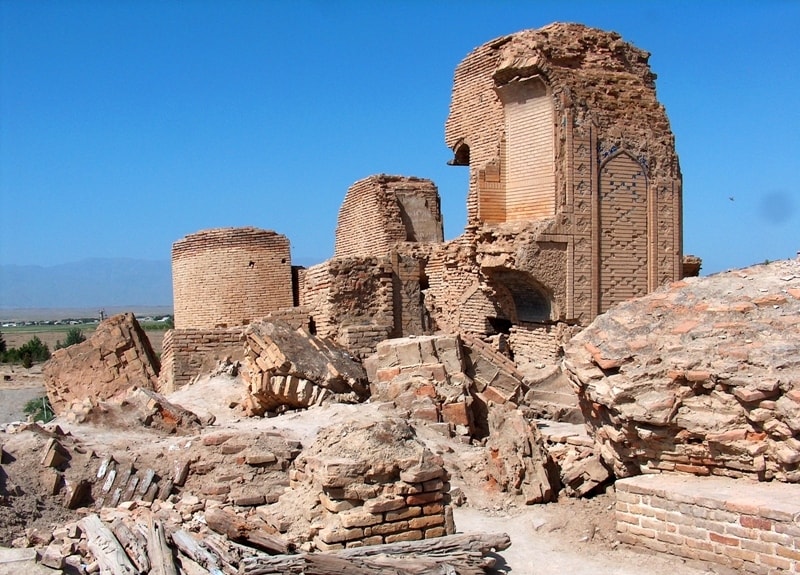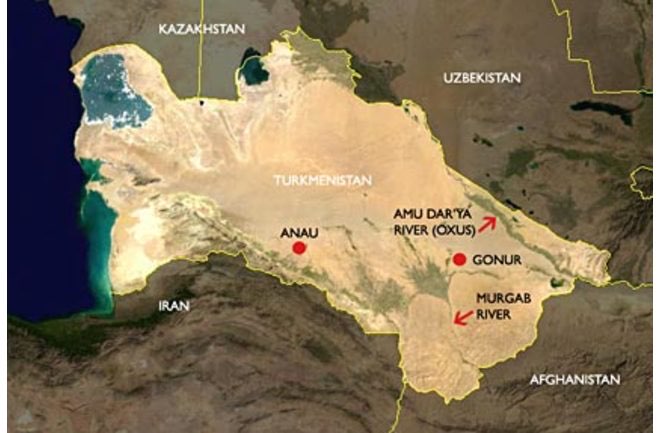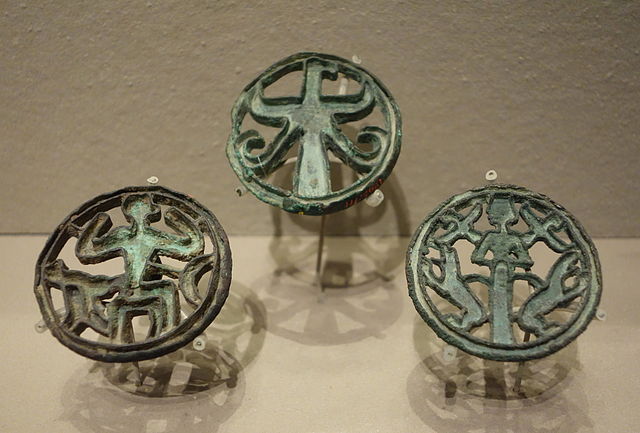Olga Bakieva, Researcher at the Institute of History and Archeology of the Academy of Sciences of Turkmenistan
120th anniversary of the first archaeological works carried out on the territory of Turkmenistan, in the foothill zone of Kopetdag will be marked in 2024. The archeological digs were held at the ancient settlement of Anau led by the American researcher Raphael Pumpelly. This anniversary date coincides with the announcement of Anau as the cultural capital of the Turkic world in 2024 by the International Organization TURKSOY.
The discoverer of the Anau culture, Raphael Pumpelly, is an American geologist, the author of 11 major works. He graduated from the Royal Mining Academy in Germany as a mining engineer.
In 1903 Pumpelly together with Professor William Davis made a study trip to Turkmenistan. Upon returning to the United States, a report was presented at the Carnegie Institute, according to the results of which additional funds were allocated for an archaeological expedition.
It was the first foreign expedition that received permission to conduct archaeological excavations in Turkmenistan.
Work in Anau was carried out on the Northern and Southern hills. Initially, digs began from the Northern hill. From the first days of excavations, an ancient dwelling and burial of a child were discovered. According to Pumpelly, the burial ground belonged to people of the prehistoric era. The objects found there can be attributed to two epochs – closer to the surface of the burial ground there were remnants of pottery and bronze products, at a greater depth – weapons and objects of the Stone Age such as slings, throwing stones, stones for baking bread, etc.
“As a very curious thing among the extracted items, let me point out three turquoise, the remains, apparently, of some female jewelry; this circumstance suggests that in the misty distance of centuries Khorasan turquoise was used as a decoration in the unpretentious household”, wrote Alexander Semenov (ed. Russian historian-researcher of Central Asia). The total number of findings and registered by American archaeologists by this time already exceeded 140 pieces.
Among the later findings are the bronze arrowheads, knives, a bronze sword (or dagger), two mortars of very good work made of solid sandstone with beautiful marble pestles, a cameo made of solid black stone in the form of a triangular prism with a hole drilled along its length in the middle. The edges of the cameo were depicted with a man figure, a griffin and a bull (or lion).
Semenov described the “technology” of excavations used by American archaeologists on the Southern Hill. Some broken ceramics, a flint arrowhead, and a stone spinning wheel were found. On the south side of the hill, according to Semenov’s description, the foundation of a house with drilled stones that served as grooves for inserting door lintels was discovered. The findings also included bronze women’s jewelry, razors, knives, remnants of stone women’s necklaces, etc.
A group of seals made of bronze, stone and clay found in Anau is of considerable scientific value. These are the first finds of this kind dating back to the Bronze Age. A copy of a seal of a form rare for the Bronze Age, cast in a special clay mold is of particular interest. Terracotta seal, which has a double-sided ornament, is also interesting.
The excavations carried out later on this site by Turkmen archaeologists showed that the Northern Hill is more ancient than the Southern One and dates back to the Eneolithic era.
A well-known orientalist, an expert in the history of Turkestan, Professor of St. Petersburg University V. Bartold was also involved in the work of Pumpelly’s expedition. He was entrusted with general control over the activities Transcaspian region. Getting acquainted with Anau finds, Bartold was the first to give an objective assessment of outcomes of Pumpelly’s expedition.
The scales and beards of cereal plants in the remains of raw bricks found in Anau should be particularly noted. This fact indicates that the ancient ancestors of the Oguz Turkmen cultivated grain crops in this area. Upon detailed examination, it turned out that the detected signs are characteristic of wheat. This wheat variety is now known as ak bugday [white wheat].
Pumpelly introduced the materials from the excavations of the Anau to the scientific world. One of the results of the excavations of the American expedition on the Northern Hill of Anau was the identification of two cultural layers, called Anau I and Anau II. Since then, it has been noted in the scientific literature that in the era of the Eneolithic and Bronze Age, there was a settled agricultural culture called the “Anau culture” in the foothill zone of Kopetdag.
The results of the expedition of Raphael Pumpelly resulted in a two-volume book “Explorations in Turkestan, expedition of 1904 : prehistoric civilizations of Anau, origins, growth, and influence of environment”, published in Washington in 1908. Archaeological research by American scientists conducted in 1903-1904 in the Kopetdag foothill strip and in the Merv oasis, became a kind of starting point for further scientific developments.
Thanks to the publications of scientific materials, the identified stratigraphic layers have gained worldwide fame as the Anau ancient agricultural cultures. Naturally, from the standpoint of modern science, there are certain gaps in the work carried out in the early 20th century, especially with regard to dating. Currently, the general name “Anau culture” is widely used to designate related and interrelated ancient agricultural tribes of Kopetdag foothills, Tejen, Murgab.
The Central State Archive of Turkmenistan holds documents on the total number of findings of material culture discovered by the Pumpelly expedition. After the excavations in Anau, they were sent to St. Petersburg. Other materials have been sent to Zurich. They are currently stored at the Peabody Museum (Philadelphia).
The discovery of the Anau culture and Ak bugdai was a major contribution to the historical science and historiography of Turkmenistan. Pumpelly’s expedition became the first foreign group of scientists to conduct a major scientific project at the dawn of the 20th century, which opened an unknown page of the distant past of the Turkmen land. The results of that work encouraged the research by new generations of Turkmen archaeologists in close cooperation with prominent foreign colleagues. ///Originally published by Neutral Turkmenistan Newspaper, 19 April 2023


